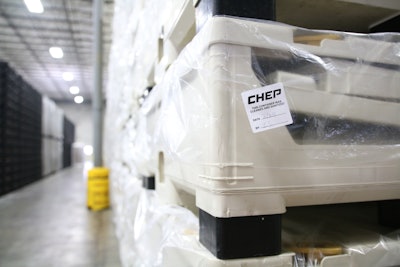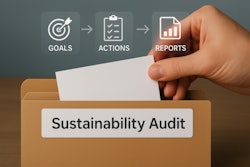
The era of single bottom-line leadership is over. Customer expectations (CX) are accelerating faster than corporate strategy can adapt, creating a constant pressure to prove long-term relevance. Business leaders now recognize that sustainable business practices are key to influencing the entire value chain, with data showing that 88% of companies globally view sustainability as a long-term opportunity for value creation, according to a 2025 Morgan Stanley report.
This insight leads to a crucial question: Can embedding sustainability into every stage of the buyer journey be the ultimate solution to helping your customers (and their customers) succeed? I believe the answer is yes.
However, deepening the customer relationship demands authenticity. When sustainability is credibly linked to each stage of the customer journey, it creates a shared opportunity for collaboration and innovation. And with 70% of executives saying customer expectations are evolving faster than their companies can adapt, according to PwC, the bar is high.
In today’s market, being sustainable isn’t enough of a competitive differentiator, but circular practices can be. Here’s how organizations can connect circularity and CX to differentiate themselves in each stage of the customer journey, from discovery and decision-making to advocacy and loyalty.
Discovery: Communicating circular value early attracts new business
If done correctly, circular business models can have an advantage over linear systems during the discovery phase (before customer engagement even begins). That’s because sustainability continues to grow as a key decision factor during procurement. In fact, Thomson Reuters’ 2024 Global Trade Report found that 81% of respondents said that environmental, social and governance (ESG) issues are a major consideration in selecting suppliers.
With these mandates in place, it’s essential for organizations to highlight their sustainability credentials early in the customer journey process. By framing the circular model in terms of tangible benefits like a lower total cost of ownership, enhanced asset utilization, transparent sustainability data and more, businesses can more easily see how a product or service can provide actionable value to them.
Doing so positions discovery as more than just a first impression. It’s the first moment of alignment for organizations before definitive relationships are set.
Evaluation and decision: Leveraging data to differentiate and build trust
As companies move beyond the discovery phase to evaluation and decision, data becomes the currency of differentiation and credibility. This is especially true as organizations face growing pressure from increased ESG reporting regulations, accompanied by heightened scrutiny of potential greenwashing. KMPG 2024 research reveals a gap in readiness here, with two-thirds of CEOs admitting they aren’t prepared to withstand the potential scrutiny and expectations of shareholders in regards to ESG, further highlighting the need for reliable and transparent data.
When sharing key sustainability proof points and objectives with potential customers, supply chain leaders should clearly communicate how the benefits of circularity align with customer priorities and international frameworks, such as GHG protocol, GRI and SASB standards. For example, a pooled pallet company can detail how its share, repair and reuse system reduces waste compared to single-use alternatives and back it up with validated third-party lifecycle assessments that easily calculate the environmental savings.
Usage and retention: Collaborating to drive ongoing solutions and impact
Once a partnership is established, the true value emerges by making sustainability data personal, relevant and directly tied to each customer’s unique goals.
This often involves working closely with customers to uncover opportunities for reducing environmental impact across their operations. These opportunities are then framed in the context of their specific sustainability objectives and KPIs. It’s a collaborative effort but should focus on what matters most to the customer.
While there are many ways to support ongoing sustainability efforts, circular systems offer a distinct, built-in advantage. Because they’re designed as closed loops, operators have increased visibility across the network, which makes it easier to spot new and evolving opportunities. With a holistic view of the full value chain, hidden inefficiencies like overlapping transport lanes or duplicated waste streams become clearer and easier to streamline.
Additionally, circular systems inherently drive collaboration, often creating natural touchpoints between distributors, manufacturers and retailers that result in innovative partnerships and co-created solutions. For instance, a retailer dealing with single-use plastic wrap waste might be connected with a manufacturer that transforms that waste into regenerative products.
Ultimately, the goal is to turn insights into action, using sustainability data and circular models to build long-term value. By staying closely aligned with customer goals and fostering collaboration across the value chain, these efforts become more than one-time wins.
Advocacy and loyalty: Becoming sustainability advocates
As customers achieve success and move into the advocacy and loyalty phase, supply chain leaders can leverage all the accomplishments they’ve made to turn them into true sustainability advocates.
This means providing partners with the tools they need to communicate their success. Whether that’s by supplying customers with environmental certificates or developing case studies to highlight their ESG progress, these shareable materials make it easier for them to communicate their impact to their broader network.
Acknowledging shared accomplishments strengthens relationships, encourages continued collaboration, and positions both the company and its partners as industry leaders, ultimately driving continued loyalty.
Advancing the global network
By embedding sustainability throughout the customer journey, supply chain leaders can turn ambitious goals into real, auditable impact. This creates a ripple effect where strong partnerships, smarter processes and meaningful customer outcomes all work together to strengthen the entire ecosystem.
Circular supply chains take this a step further. Designed to support long-term value creation, they foster enduring partnerships that extend well beyond the point of sale, encompassing ongoing service, engagement and innovation.
For progressive organizations, circularity offers more than just a sustainability strategy. It serves as the definitive blueprint for cultivating lasting customer relationships and a future-ready business; creating a virtuous cycle where environmental and social responsibility, operational efficiency, and customer loyalty perpetually reinforce each other, fostering long-term resilience and growth.



















